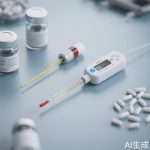In the world of industrial automation, environmental monitoring, and smart infrastructure, accurate and reliable temperature sensing is non-negotiable. Among the myriad of technologies available, RS485 temperature sensors have emerged as a cornerstone for applications demanding high precision, robustness, and seamless integration. These sensors are not just components; they are the silent guardians ensuring operational efficiency, safety, and data integrity across diverse sectors.
RS485 temperature sensors leverage the RS485 communication protocol, renowned for its resilience in noisy environments and ability to support long-distance data transmission. Unlike their analog counterparts, these digital sensors minimize signal degradation, making them ideal for large-scale installations such as manufacturing plants, agricultural greenhouses, and HVAC systems. The protocol’s multi-drop capability allows multiple sensors to communicate over a single network, reducing wiring complexity and overall costs.
One of the standout features of RS485 temperature sensors is their exceptional accuracy. With advancements in semiconductor technology, these sensors can achieve precision levels within ±0.1°C, ensuring that critical processes remain within optimal temperature ranges. This is particularly vital in industries like pharmaceuticals, where even minor deviations can compromise product quality, or in data centers, where overheating poses a significant risk to hardware.
Durability is another key advantage. Designed to withstand harsh conditions—extreme temperatures, humidity, and electromagnetic interference—RS485 sensors deliver consistent performance where others might fail. Their rugged construction often includes stainless steel probes and IP67-rated enclosures, making them suitable for outdoor, marine, or industrial settings without frequent maintenance or replacement.
Integration is seamless with modern IoT and automation systems. RS485 sensors easily interface with PLCs, SCADA systems, and cloud platforms, enabling real-time monitoring and data analytics. Through Modbus RTU or other common protocols, users can access temperature readings remotely, set alerts for thresholds, and even automate responses, such as activating cooling systems when temperatures rise unexpectedly.
Beyond industrial use, these sensors are revolutionizing agriculture by enabling precision farming. Farmers deploy them in soil and greenhouse environments to monitor microclimates, optimizing growth conditions and conserving resources. In smart buildings, RS485 sensors contribute to energy efficiency by providing data for dynamic HVAC control, reducing waste while maintaining comfort.
Choosing the right RS485 temperature sensor involves considering factors like measurement range, response time, and output options. Thankfully, the market offers a variety of models tailored to specific needs, from compact designs for space-constrained applications to high-temperature variants for furnaces or engines. Pairing them with signal conditioners or gateways further enhances flexibility, allowing compatibility with older systems or newer IoT architectures.
In conclusion, RS485 temperature sensors represent a fusion of reliability, precision, and adaptability. They empower industries to innovate, optimize, and future-proof their operations. As technology evolves, these sensors will continue to play a pivotal role in building smarter, safer, and more efficient environments worldwide.




Leave a Message